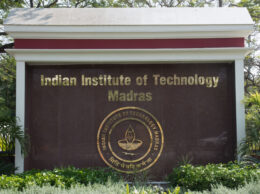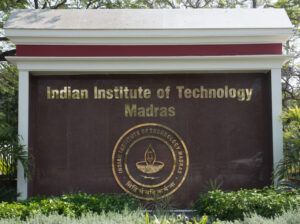Financial Market Centre (FMC) of XLRI hosted a webinar on “Structural Changes in the Banking Sector in the light of macroeconomic developments” on July 21, 2021. The webinar was delivered by Dr. Manoranjan Sharma, Chief Economist, Infomerics Rating, India.
Dr. Sharma discussed the implications of COVID 19 on the Indian banking sector. He said “the banking sector is not a silo but is a microcosm, a miniature model of the broader macro-economy. Of late, the Indian economy has been hit by the triple whammy of demonetization, GST and COVID 19. The hardest hit sectors require intensive human contact, viz., MSMEs, aviation, tourism, logistic and hospitality sectors, services, and construction; IT-intensive activities generally fared far better. India’s economy is crippled primarily because its four engines of growth — domestic consumption, government expenditure, private investment and exports — are limping. Creating jobs is critical to recovery together with boosting demand”.
WEAKENED BANKING:
Financial sector regulators & Govt. initiated policy measures to ensure normal financial intermediation functions & mitigate widespread distress. Policy measures kept financial markets from freezing & eased liquidity stress facing financial institutions and households. Consequently, borrowing costs ebbed and illiquidity premia shrunk. But risk aversion & lackluster demand impeded fuller flow of finance from both banks and non-banks into the economy. While banks have surplus liquidity, several important sectors are credit starved because of heightened risk aversion triggered by demand and supply side shocks, diminished consumer confidence, NPAs & consequently pronounced risk aversion. 4 R’s- recognition, resolution, recapitalisation and reforms led to reduced NPAs from ₹10,36,187 crore (March 2018) to Rs 8,08,799 crore (September 2020), NPAs are not uniform either across bank groups or across sectors.
The surge in NPAs stem from pronounced macro-economic slowdown; high credit growth in some sectors leading to decline in credit quality subsequently and high incidence of advances frauds, which are partly the result of faulty credit appraisals, monitoring and supervision.
IBC, 2016 marked a paradigm shift. While IBC fell short of expectations, it led to improved recovery ethics and enabling recovery environment.
Repeated Repo reductions failed to nudge banks sufficiently to lend aggressively to the productive sectors of the economy. Risk-averse bankers is quite complex and multi-layered because of mounting NPAs, fear of 4 Cs (CVC, CBI, CIC, Courts), weak demand, pending wages, and economic uncertainty.
Basic issues relate to modest capital buffers for most PSBs, mounting NPAs, higher credit costs, weaker earnings because of interest reversals bankers lower fee income and subdued growth prospects. SCB is, however, not a monolithic category and there are significant differences across PSBs and private banks & even within these two groups. Private banks are better placed to withstand post pandemic challenges.
Despite the use of the Repo rate signalling mechanism by the RBI & ample banking liquidity because of surplus capacity & lack of investments, unwillingness to finance large infrastructure projects by the private sector because of uncertainty and heightened risk aversion inducing banks to refrain from lending except to better-rated companies.
TRANSMISSION MECHANISM:
Usually there is a significant difference in the borrowing level across banks and one-size does not fit all. Banks, however, are generally not borrowing significantly because of reduced credit off-take and parking of surplus funds in G-Secs. The Repo Rate has increasingly emerged as a signalling mechanism and banks are expected to follow suit. In a deregulated environment, however, banks take their individual call on the basis of their financial position, cost and yield, level of NPAs, etc. Reduced lending rate requires a concomitant reduction on deposits to protect spreads & margins. But the rate of interest on government deposits acts as a floor. If banks drastically reduce their deposit rates, their deposits would flow to competing instruments.
FALLING REVENUES:
While central banks globally slashed interest rates, banks are reducing yields to generate business, thus significantly constricting NIMs. Income from payments and other fee-based services severely hit; moratoriums on loans reduced banks’ cashflow also. Banks must make payments safer & popularize digitization.
THE NEW NORMAL:
COVID-19 will have an enduring impact across industries, including banks because of the destruction of lives and livelihoods. Fintech in India will be increasingly important in banking, blockchains, alternate lending and advisory. Rapidly increasing fintech has been a game-changer with Paytm, Mobikwik, Freecharge, Bankbazar, etc. leading in payments, credit, investment, insurance, wealth management & financial inclusion. The compelling need to transform requires an accent on cyber security.
ROADMAP AHEAD:
In the revamped order, learning, unlearning and relearning has to be the new credo.
COVID-19 resiliency will facilitate the emergence of three distinct segments:
- already future-ready banks with truly digital banking capabilities and cost elasticity with greater use of frontier technologies beginning with robotic process automation (RPA) at its core, and expands automation capability with artificial intelligence (AI), process mining, big data, analytics and networks and other advanced tools, such as, machine learning (ML) and predictive analysis. But Fraud Detection and Risk Management, KYC & AML are necessary.
- digital laggard banks need to evolve and renew due to sub-par COVID-19 resiliency, and
- persisting digital laggard banks will struggle to survive with sub-par financial and operational resiliency.
Recovery from Covid19 is on but differential performance across sectors and regions persist. Dr Sharma underscored that the world needs new ways of thinking about finance and the risks it entails. Indian banks and financial institutions can no longer exist in cocoon or adopt an ostrich like attitude in the wake of the inexorable process of globalization. We must not be oblivious of safeguards in moving ahead with financial reforms and adopting best practices in mapping the future of Indian banking. Truly difficult times necessitate recalibrated strategies & change of focus. Dostoevsky wrote “the darker the night, the brighter the stars”. Similarly, Shelley held “if winter comes, can spring be far behind”? The Bible stressed “this too shall pass”.
The lecture was followed by a Q&A session, anchored by Dr. HK Pradhan, Professor of Finance and Economics at XLRI – Xavier School of Management, Jamshedpur, who briefly narrated the lecture and thanked Dr. Sharma for sharing his thoughts around “Structural Changes in the Banking Sector in the light of macroeconomic developments”. Dr. Trilochan Tripathy, Professor of Finance, added a few dimensions to the discussion where he argued that the bank consolidation may have concern and impact on credit availability over the business cycle in India. He argued that the bank consolidation in India may lead to monopolization of banking business in India. The banks’ collusion may be expected in the burst phase of the business cycle which may lead to higher mark-ups affecting the consumers and business all across. On the other hand, reduction in competition may help stabilise credit in the burst phase of the business cycle. Further larger banks may be better diversified which in turn may pose threats to the smaller banks in India. Prof. HK Pradhan also observed that the RBI issue of license to NBFCs, payment banks, small finance banks, and new banks over the years may also trigger technological adoption, competition and efficiency in Indian banking Industry.
Financial Market Centre
The Financial Market Centre (FMC) was established in 1998 at XLRI, Xavier School of Management as a centre for advanced learning and research serving the Indian financial sector. The FMC serves as the focal point of interest at XLRI in research, training and consultancy in financial markets. The FMC is steered by faculty of finance and economics at XLRI, doctoral fellows of the institute, and alumni. Dr Pradhan, Professor of Finance and Economics, the founder of the centre currently serves as the Chair.








